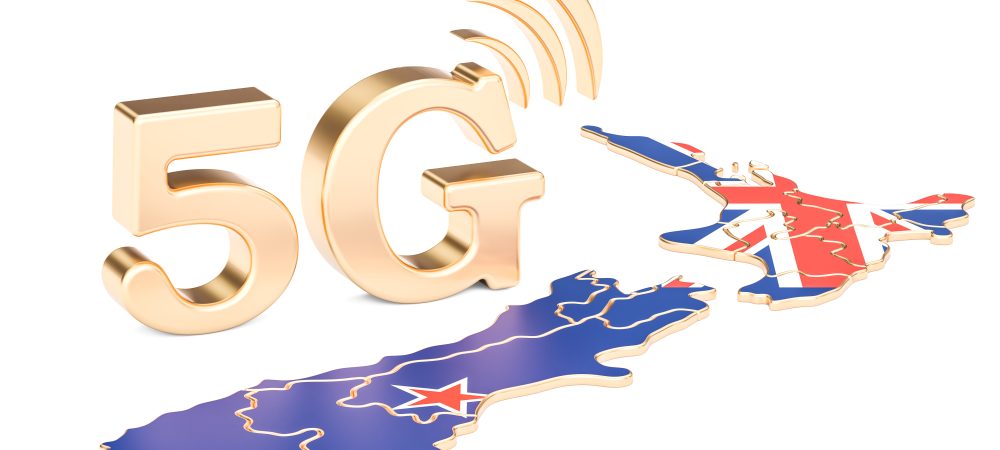Spark, New Zealand’s largest telecommunications and digital services company, has unveiled an ambitious three-year plan to invest $40-$60 million in 5G Standalone nationwide.
The move means opening up new commercialization opportunities across core mobile and broadband markets – while underpinning growth into new high-tech solutions.
“Our 5G coverage is densifying. This sets us up to continue to grow value in mobile and to move wireless broadband towards 35% of our base by the end of FY26,” said Spark CEO Jolie Hodson.
Spark has pitched a 3G switch-off date towards the end of 2025 with this spectrum used to support its rural 5G rollout. That 3G network was launched in 2009.
Spark stats show that just 4% of its entire network data traffic runs over 3G, while 3G voice calls have declined by 70% since 2019 and the 4G service currently serves 98% of the country’s population.
The latest 5G investment is included in a three-year strategy to FY26 unveiled by Spark in April.

In July last year, Spark sold a 70% stake in its towers business for NZ$900 million to Canadian investment firm Ontario Teachers’ Pension Plan Board.
Back in February, Spark said it had allocated NZ$350 million of proceeds from the sale of its towers to invest in digital infrastructure, data centers and emerging technologies, with about NZ$90 million to NZ$110 million earmarked for fiscal 2023.
Hodson said: “Over the next three years, we will invest $250-$300 million in the high-growth data center market and $40-$60 million in 5G Standalone, which will open up new commercialization opportunities across our core markets of mobile and broadband, while underpinning growth into new high-tech solutions.”
“If there is one thing the last three years have taught us, it is that the businesses that will thrive are the ones that can adapt the most quickly to change. We see a number of supportive tailwinds ahead of us, including the continued exponential growth in data, acceleration of technology convergence, the return of international travel and rising levels of immigration. At the same time, we expect economic uncertainty to be a hallmark of the years ahead, and as Aotearoa gets bigger, older and more diverse, we must ensure Spark is changing alongside it. “
Spark Chair Justine Smyth said: “Over the last almost three years Spark has built competitive advantage through a strategic focus on simplification, data, new technology investment and building a high-performance culture, which is delivering better customer experiences and fuelling market growth. This focussed execution has seen Spark’s total shareholder returns outperform most international peers.
“Spark is now in a strong position to invest for future growth.”
5G Standalone is an integral element of Spark’s high-tech portfolio – which extends beyond traditional connectivity and ICT into areas including IoT, data and AI and digital identity.
Though Spark has rapidly matured its high-tech capabilities over the last three years, the technologies are still, at this stage, operating largely independently of each other.
The strategy represents a rapid acceleration of convergence which is about bringing these different technologies together to solve business problems where it was not possible, or cost effective, to do so in the past.

In 2021, Spark announced it would invest an additional $35 million to accelerate its 5G rollout, boosting total mobile connectivity investment to $125 million in FY22 and delivering 5G coverage to approximately 90% of the population by the end of calendar year 2023 – assuming the necessary spectrum was made available by the New Zealand Government.
The accelerated rollout was intended to introduce 5G to an additional 10-15 locations across the country by the end of 2022, with more to follow in 2023 – including expanding coverage in the existing Spark 5G locations of Auckland, Christchurch, Hamilton, Dunedin, New Plymouth and Palmerston North.
As envisaged, the accelerated rollout would see Spark upgrade approximately 50% of its sites nationally to 5G by the end of calendar year 2022 and 85% by the end of calendar year 2023.
In 2020, Spark was allocated management rights to 60 MHz of 3.5GHZ (or C Band) spectrum – which allowed the 5G rollout across FY21.
Work continued with the Government and other stakeholders on the longer-term 3.5GHz auction and to enable access to the 600Mhz band – particularly important for rural areas because of its ability to provide 5G connectivity over greater distances.
In 2022, to lay the groundwork for Spark to roll out standalone 5G at scale in the future and explore the future benefits of 5G, Spark created and ran two proof-of-concepts for Standalone 5G with technology providers Mavenir (5G Standalone cloud-native core solution) and AWS (multi access Edge Computing and 5G optimized cloud solutions, and technology partners Nokia (cell site infrastructure) and OPPO (5G devices).
Spark deployed a Mavenir 5G Standalone cloud-native core solution on AWS Snowball Edge, a device described as ‘physically rugged’ that provides Edge Computing and data transfer services.
This was pitched as Mavenir’s first global edge deployment on AWS Snowball Edge.
Using an AWS Snowball Edge device allowed Spark to create a highly portable edge solution that could literally fit into a suitcase – to process and store data close to where it’s generated, enabling low latency and real time responsiveness.
The proof-of-concept work allowed Spark to experiment with how a highly customizable network can be sliced and adapted to evolving enterprise requirements – creating dedicated virtual networks with functionality specific to the service or customer over a common network infrastructure.
Work done by NERA Economic Consulting predicts that the national rollout of 5G could add between $5.7 billion and $8.9 billion per year to the New Zealand economy over the next 10 years.
Click below to share this article

